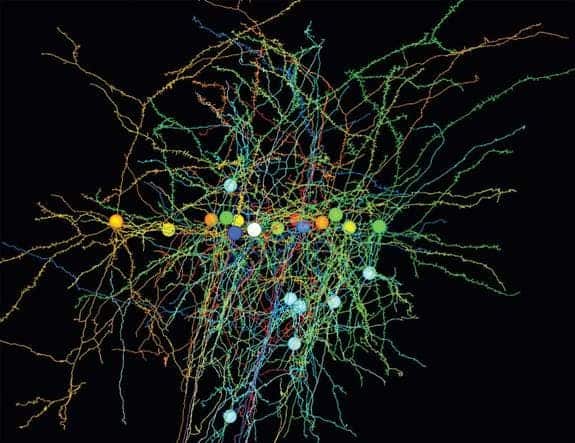

On the other hand, at chemical synapses, the electrical signal within neurons, called an action potential, is translated into a chemical signal that can travel across the synapse to the next neuron in the circuit. There are other cells, like in the heart, that also have gap junctions that transmit electrical signals. These gap junctions may actually be better understood in other areas of the body, as they are not unique to neurons. “Electrical synapses have been understudied.”

“We know very little about how these synapses are regulated,” Rimer said. How Do I Boost My Baby’s Brain Development? Instead, ions travel through what are called gap junctions and transfer an electrical charge to the next neuron. The simpler type is the electrical synapse, in which there are essentially no gaps between the cells. There are two different types of synapses, the electrical and the chemical, and they work very differently. “Each of these circuits has a number of synapses that connect the neurons that carry the sensory information to the brain about the approaching ball and the neurons that execute the motor commands from the brain to move the arm.”Īt the same time, all of these transmissions need to happen very quickly, in milliseconds, so it seems to all happen simultaneously-and we aren’t hit in the face with the ball. “Transmission of information within the nervous system operates in circuits, which can take up information, like the fact that a ball is coming toward us, or create an output, like bringing the arm up to catch the ball,” Rimer said. Synapses are also important within the brain, and play a vital role in the process of memory formation, for example. This is how the intention to move our arm, for example, translates into the muscles of the arm actually moving. Synapses connect neurons in the brain to neurons in the rest of the body and from those neurons to the muscles.

Synapses are part of the circuit that connects sensory organs, like those that detect pain or touch, in the peripheral nervous system to the brain. Here, he explains how synapses work and what we do-and don’t-know about these crucial connections. He studies a specific synapse called the neuromuscular junction, which-as the name implies-connects a motor neuron with a skeletal muscle fiber. “The synapse is essential for life,” said Mendell Rimer, PhD, an associate professor in the Department of Neuroscience and Experimental Therapeutics at the Texas A&M College of Medicine. By Christina Sumners, Texas A&M University Health Science Center


 0 kommentar(er)
0 kommentar(er)
